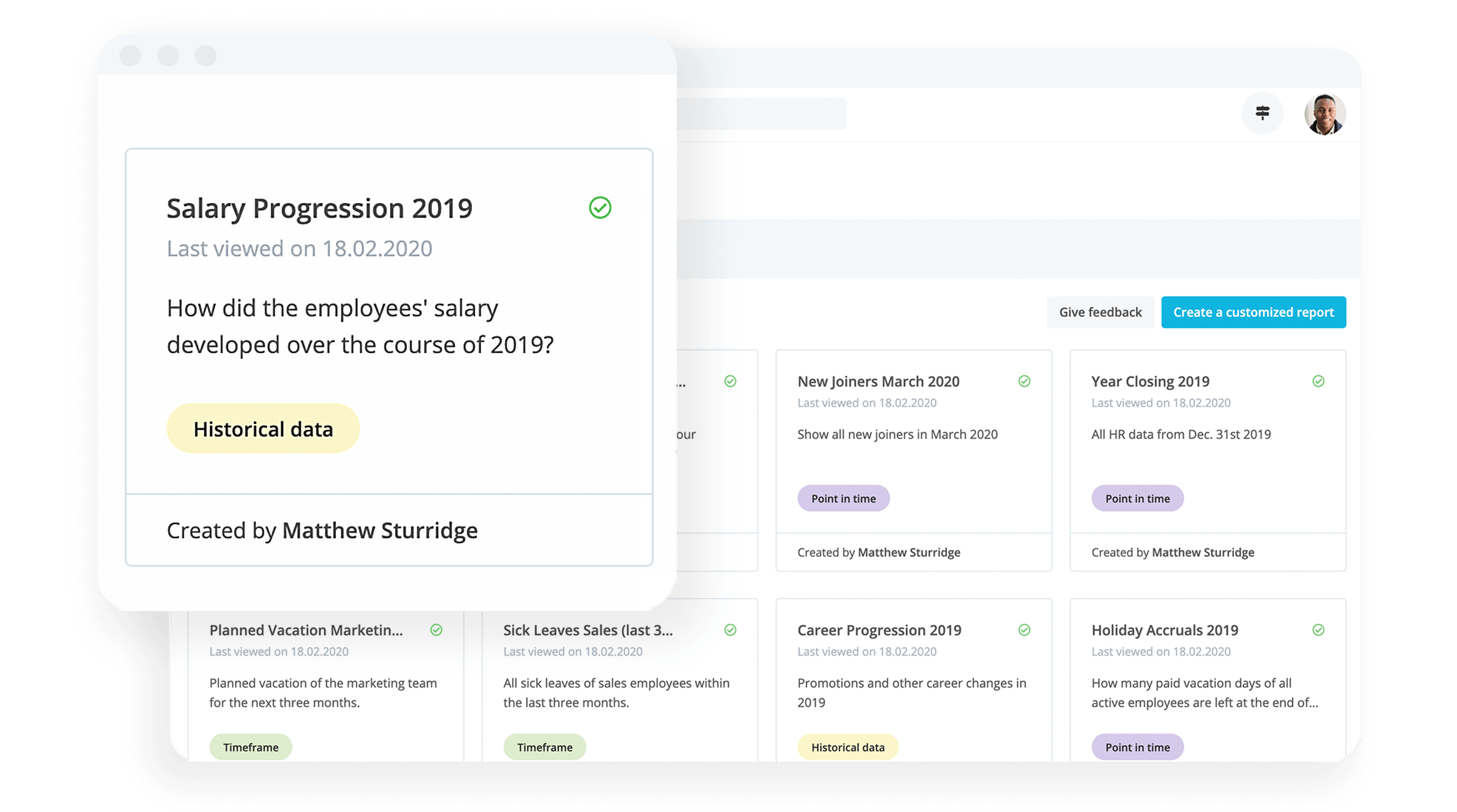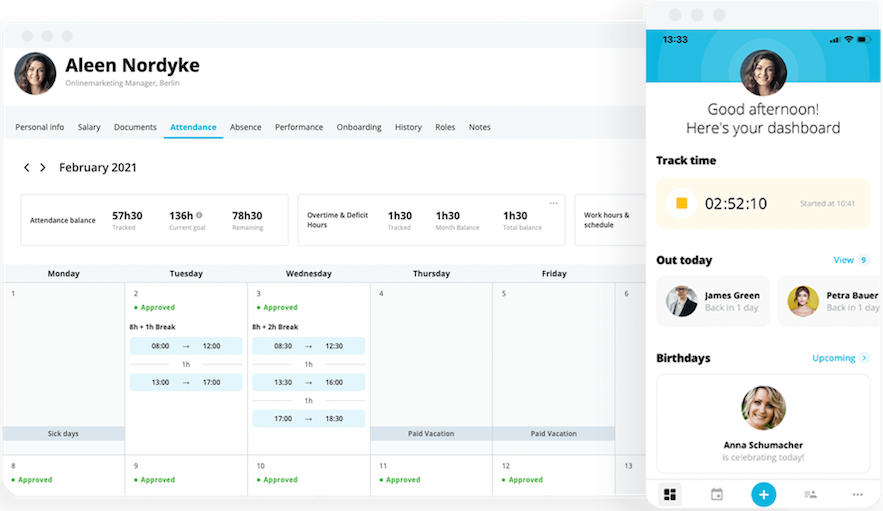Mastering Change Management: Key Tips & Common Pitfalls

To paraphrase a common saying: Change management is the only constant. To stay competitive, organisations need to thrive at change. However, research reveals that 75 to 80 per cent of all change initiatives fail.
Human Resources (HR) plays a significant role in determining the success of these projects. This article will guide you through various models and techniques that can help you manage organisational changes effectively from an HR perspective.
What is change management?
Change management is the systematic approach of guiding teams through change or periods of transition. This is done to help achieve specific goals, with added emphasis on helping individuals adapt to new work practices.
What is the change management process?
Change management processes are designed to help support change. That includes determining ways, unique to your organisation, that you can support change with employees, within teams, or as part of your overall department structure.
A change management framework typically involves three key elements:
People: Helping employees and stakeholders adapt to change.
Processes: Making change happen smoothly on an organisational level.
Technology: Automating change to make it stick.
Is change the same as transformation?
Change seeks to achieve specific, measurable outcomes, whereas workforce transformation is more extensive, uncertain and exploratory. Transformation involves looking for future business models or reshaping an entire organisation.
Popular models for structuring change management
Here are some of the most popular change management processes and models that can help inspire your organisation...
Krüger's five-phase model
German economist Wilfried Krüger devised a model that enhances some of the best-known change management frameworks like Kurt Lewin's 3-phase model and John Kotter's 8-step model.
It acknowledges that change processes need to be flexible and could involve backtracking to previous phases.
Phase | Definition |
|---|---|
Initialisation | Perform a current state analysis and assign a change manager. |
Conceptualisation | Appoint project managers to design a change plan and catalogue of actions. |
Mobilisation | Clearly communicate the upcoming changes to gain maximum staff buy-in. |
Implementation | The project team executes the planned actions, monitored by those accountable for the initiative. |
Consolidation | The change is deemed successful, but employees must be prepared for future changes. |
ADKAR model by Jeff Hiatt
Hiatt's ADKAR model aims to engage employees throughout the change process, divided into five stages.
Awareness: Make employees aware of the need for change.
Desire: Instil a willingness to partake in and support the change.
Knowledge: Equip staff with the requisite knowledge.
Ability: Staff practice new skills required for the change.
Reinforcement: Showcase initial successes to solidify employee commitment.
Practical tools in change management
HR's primary roles include facilitating change, training, and knowledge management. Here are some key tools HR should utilise:
Culture analysis: To identify barriers to change.
Conflict management: To mediate escalating tensions.
Team building: To strengthen team cohesion during turbulent times.
Executive coaching: To help employees adapt to new roles.
Change reporting: To document progress against key performance indicators (KPIs).
An example of change management in action
Using the ADKAR model, here is an example of how to build an effective change management process in your organisation when it comes to annual leave…
Phase 1: Awareness
Start by preparing for change. We might already know that employees don’t like completing leave requests, because their managers haven’t required them to do it in the past. They also don’t see how it’s helpful to the business to do it far in advance, and they think it is their right to take leave whenever they want.
Phase 2: Desire and Knowledge
Let’s create a Desire to support the change. Your CEO could simply send an email to all employees explaining that booking leave in advance isn’t just helpful to the company. It also helps plan when to have important company meetings and make sure there are always the right numbers of people available to serve customers. It’s also important for people’s mental health and wellbeing that they take all their leave.
They could share Knowledge about the importance of encouraging staff to take annual leave. Point out that the average employee takes just 62% of their allowance in the UK, this is bad because it costs the country around £77.5 billion a year in lost productivity due to mental and physical ill-health, often caused by stress.
Phase 3: Ability and Reinforcement
We might find that, despite our CEO’s email, people still are not booking holiday in advance. It might be because they don’t have the Ability to do it. By changing the tools that people use to record leave to have a single sign-on that is approvable on an app, for example, it might be possible to reduce resistance to booking leave.
Reinforce this behaviour by mandating it. For example, employees might be told that they will lose certain fringe benefits if they don’t book their leave in advance.
Review, approve and track absences from one place: Personio

Seamless absence management that scales with your headcount. See how Personio can manage every type of leave for your organisation today.
Absences with PersonioKey factors for successful change management
Clearly defined goals: | When facing declining sales figures, it's vital for sales management to define clear objectives. It's essential to outline exactly what needs to be achieved, how success will be gauged, and when changes will be implemented. Using the SMART (Specific, Measurable, Attractive, and Timed) criteria can help shape these objectives effectively. |
Employee involvement: | For any change to be successful, particularly in situations where facilities are merging or facing closure, it's critical to listen to and involve employees. Their insights might reveal the value in retaining certain established structures, and their buy-in is crucial for the success of any changes. |
Systematic approach: | Whenever responsibilities are being reallocated, as seen with sales teams, tensions can arise. Instead of relying on intuition alone, HR should employ a structured and methodical approach to handle these issues professionally. |
Potential pitfalls in change management
Lack of prioritisation: | Change can't be effective if too many goals are pursued simultaneously. A new CEO pushing for innovation, customer engagement, agility, and expansion all at once can leave staff overwhelmed and demotivated, ultimately harming the business. It's crucial to prioritise and handle changes incrementally. |
Overlooking company culture: | Change isn't just a logistical process. While certain organisational changes might be implemented rapidly, altering a company's culture is a slow endeavour, often taking months or years. Recognising and planning for this is essential, with strategies like discussions, coaching, and team workshops being invaluable. |
Under-resourcing | Successful change doesn't just require a budget; it also demands time, skilled staff, and expertise. Following significant shifts, such as restructuring, workers may need extensive training, sidelining them from their usual roles. Managers need to realistically assess and allocate resources to prevent derailing the change process and dampening employee morale. |
How can you tell if change management is working?
To track change management effectively, you'll need to be consideration of a universe of metrics that can have an influence. Things like:
Employee engagement and satisfaction scores
Churn and retention metrics
Survey response data and qualitative feedback
More data-driven HR is possible with Personio

Salary progression, headcount, sick leave and more, Personio's analytics and reporting function makes it easier to make strategic decisions based on data. Learn a bit more about how it works by clicking below.
Show me reporting with PersonioThe indispensable role of HR in change management
Even when change management projects seem unrelated to HR, such as implementing a new IT platform, the employees must adapt. HR serves as the linchpin for making any change management initiative work.
Given the accelerating pace of digital transformation, HR’s role as change managers will only continue to grow in importance.

